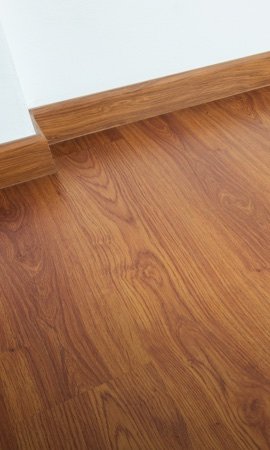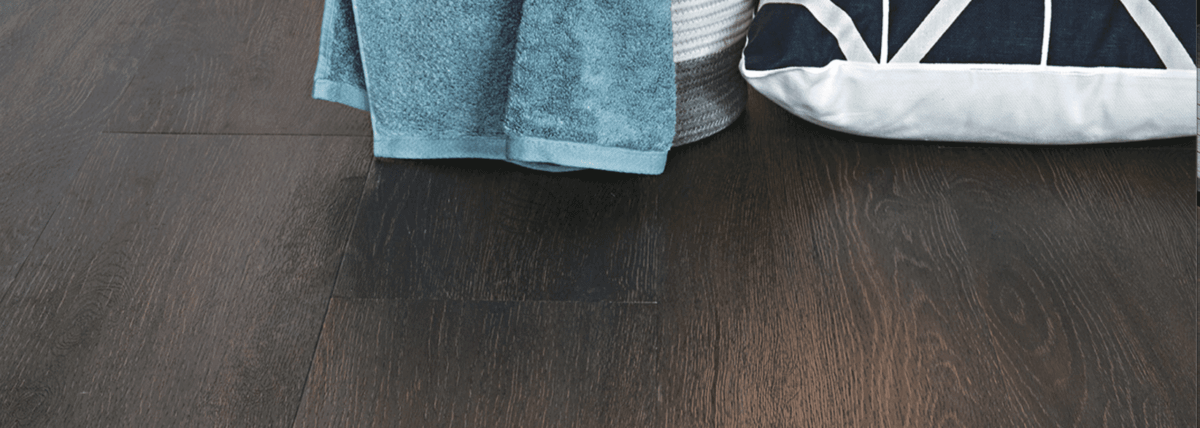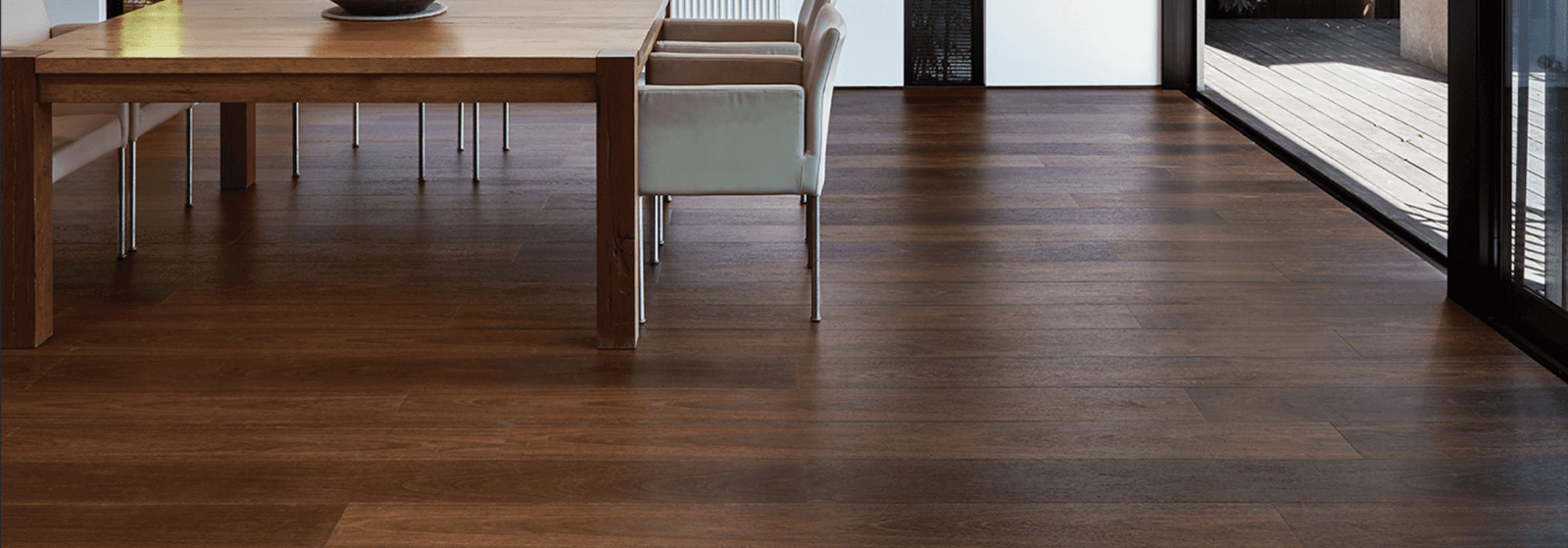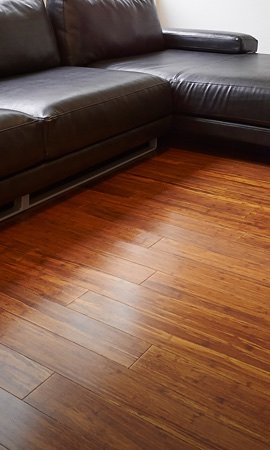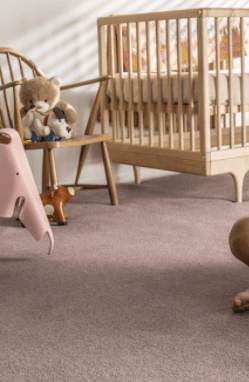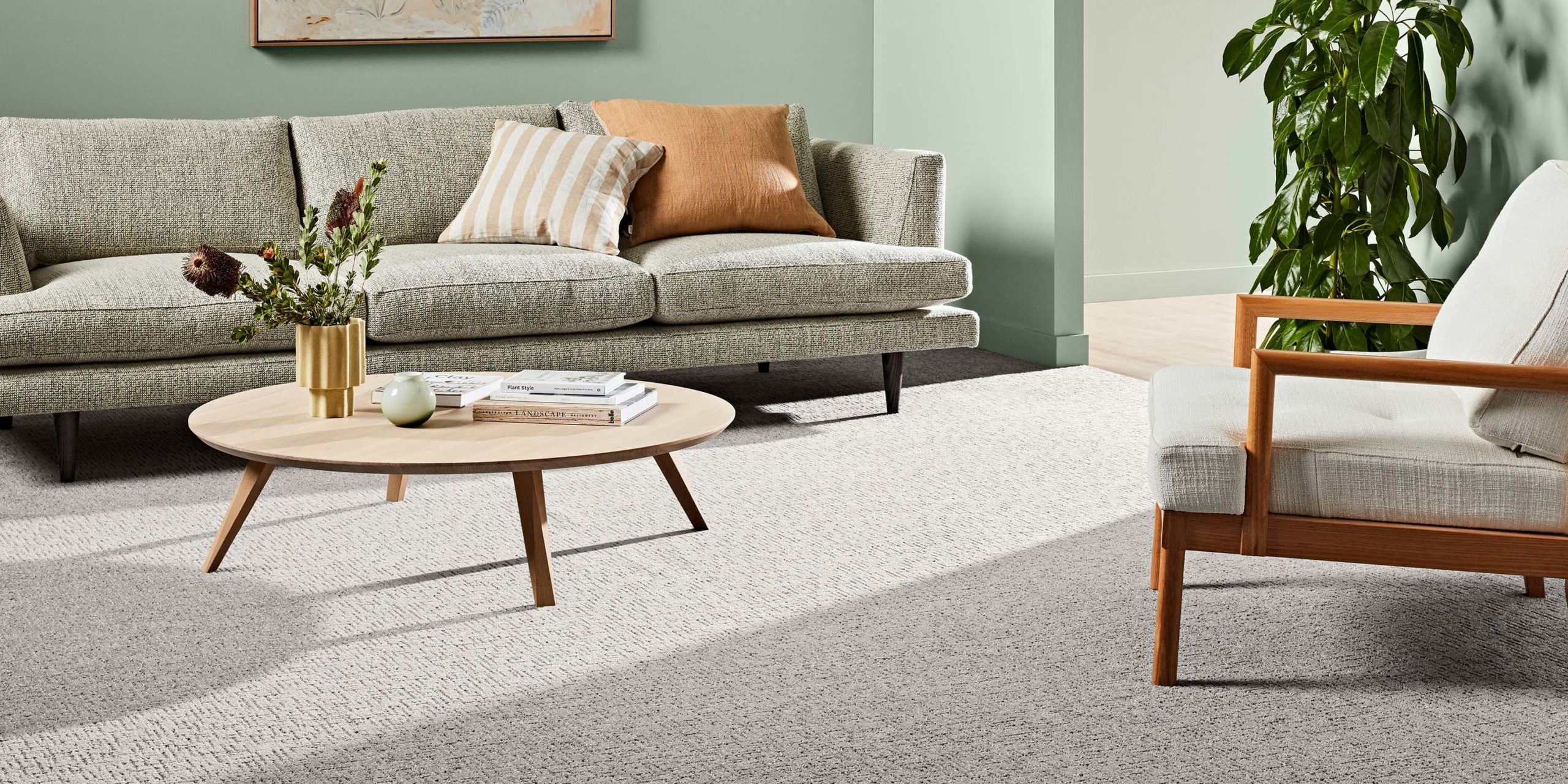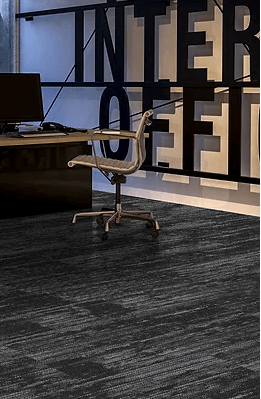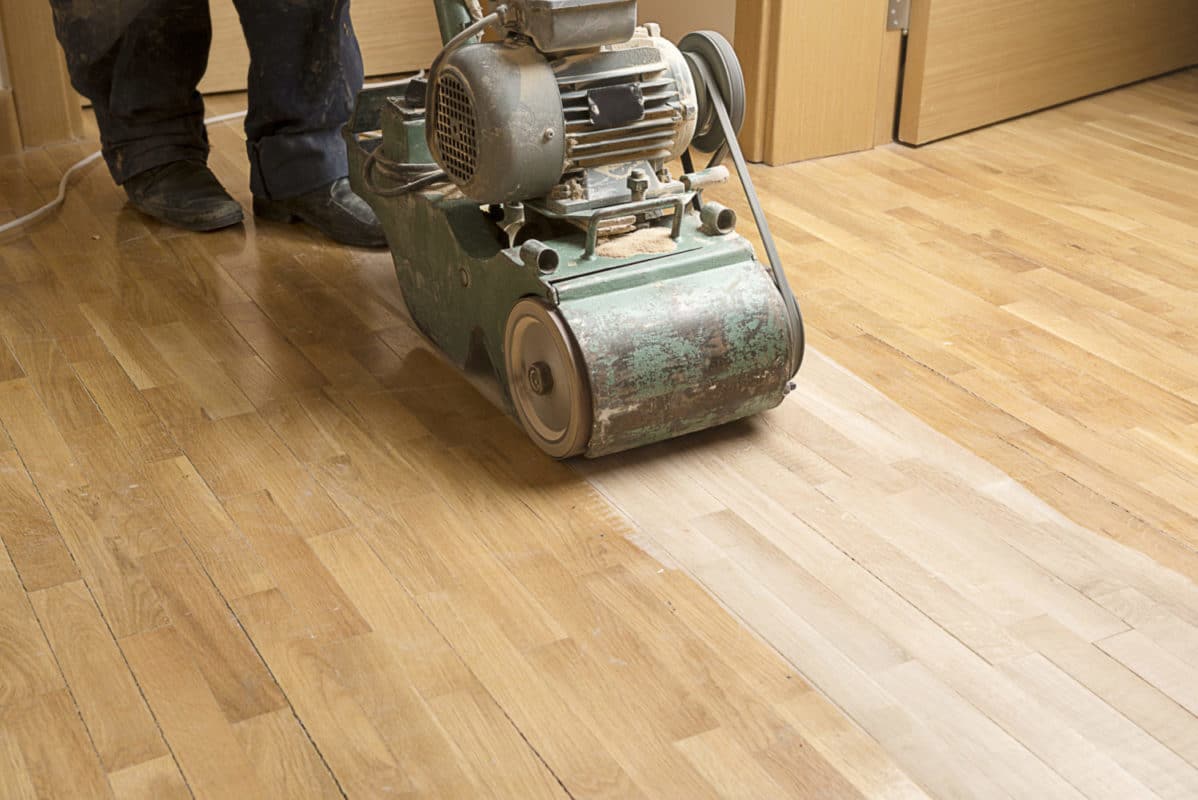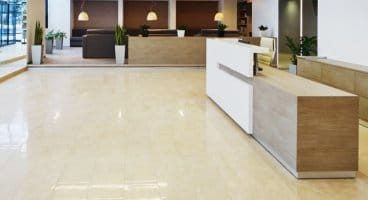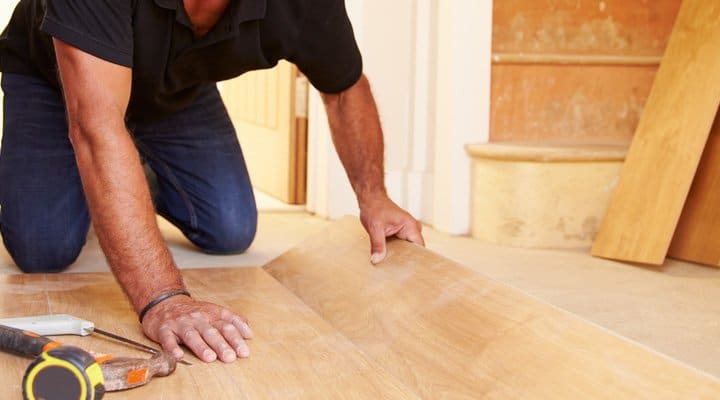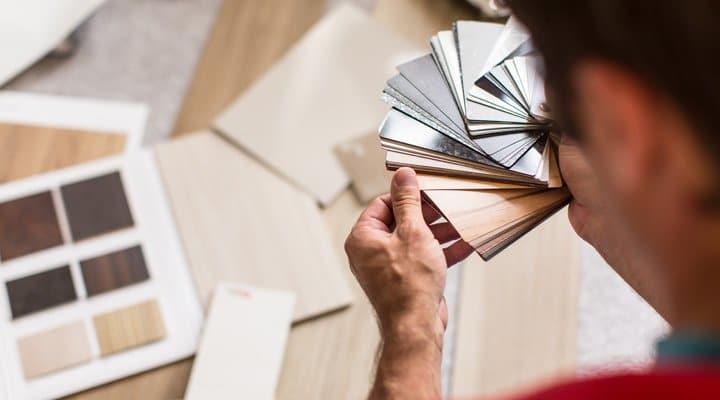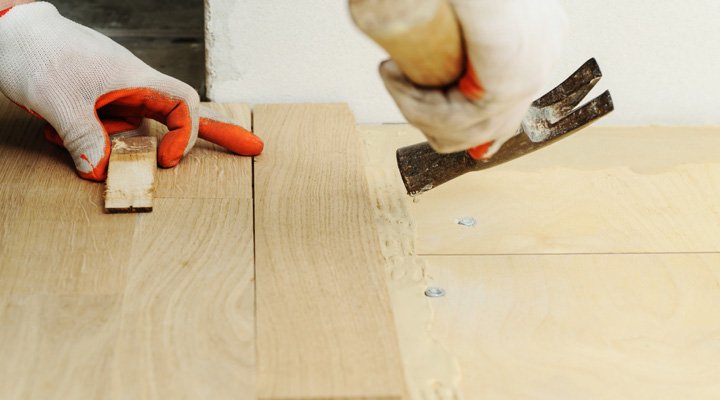

14 Aug Solid Timber vs Engineered Timber Flooring
In this article, we’ll take a deep dive into the choice between the “real” timber flooring options: solid timber flooring and engineered timber flooring. Both of these options utilise the natural warmth and beauty of real timber from trees, with a diverse range of colours, grains and finishes that make it deserving of its premium status in flooring.
But we hear you wondering: what’s the practical difference between the two? In this article, we’ll take a look at how they’re constructed and installed, as well as their benefits and drawbacks. By the end of reading this guide, we hope that you’ll be able to confidently make an informed decision as to which option suits you.
Solid Timber Flooring
What is Solid Timber Flooring?
Solid timber flooring is the ‘real deal’ – solid timber logs that are milled and dressed to make flat, robust floorboards. This tried and true option gives you the benefit of having a completely natural floor that ages gracefully, can be sanded multiple times and lasts for lifetime when properly cared for.
Type of Wood: Hardwood vs Non-hardwood
Solid timber floors come in two types depending on the species of wood used: hardwood and non-hardwood. Hardwood floors (e.g. Spotted Gum, Blackbutt, Ironbark) have a higher density than non-hardwood (e.g. Cypress Pine, Birch, Victoria Ash), making them more durable but more expensive. Meanwhile, non-hardwood is more affordable and environmentally friendly, as they grow much faster than hardwood varieties.
We would generally recommend hardwood for flooring because they’re more durable, and will generally last longer if cared for properly.
Prefinished Solid Timber vs Raw Solid Timber Flooring
When choosing a solid timber floor, you’ll also need to consider whether to get a prefinished or a raw solid timber floor. The difference is what you need to do with the floors before and after they’ve been installed.
Raw solid timber floors need to be finished (i.e. coated with a substance, mostly to increase durability) after installation, which does give you more flexibility to choose the colour and texture of your floors. Unlike prefinished solid timber floors, raw solid timber floors also allow installers to seal the borders of the floors, as well as the gaps between floorboards.
The drawback to raw solid timber floors is that they require acclimatisation to the environment before installation – usually achieved by leaving them on-site for 2-3 weeks (ideally up to 6 weeks). This process, also called seasoning, allows the floorboards to expand or contract in size depending on the climatic conditions of your home or office. In addition, the sanding and polishing stage after installation of raw solid timber floors can also take up to a week.
Meanwhile, prefinished solid timber flooring is the newer and more convenient option, as these floors have already been sanded, treated and sealed during manufacture. They’re faster to install because they don’t require acclimatisation before installation, or polishing afterwards. Prefinished floors are also more durable because the protective top coat can be applied more thoroughly and consistently with professional machinery in the factory.
Advantages of Solid Timber Flooring
1) Premium & Authentic Look and Feel
It’s the real thing – what more can we say? As their name suggests, solid timber floors feel very sturdy underfoot. Not only this, but they look the part too, exuding a unique character from their natural origins.
2) Durable
Solid timber floors (especially hardwood timbers) provide a reasonably durable and hard-wearing surface suitable for high-traffic areas, particularly when combined with a strong finish such as polyurethane. This will ensure that your floor is able to resist most dents and scratches, keeping it looking greater for longer.
3) They Last a Lifetime
As solid timber floors are completely made up of single pieces of wood, they can be resanded and repolished to breathe new life into them.
The sanding life of various floors depends on the distance between the current surface and the joints that hold the floorboards together. Solid timber floors have about 6mm of sanding life, with about 1mm used per sand. Meanwhile, engineered timber only has a sanding life of 2-4mm, and surfaces like laminate or hybrid can’t be re-sanded at all. If you’re using a solid timber floor in a high-traffic area such as the lounge room, expect needing to buff and recoat your floor every 10 years or more.
4) Easy to clean
Flooring surfaces such as carpet are notoriously difficult to clean properly. Solid timber floors, on the other hand, are a breeze to clean, with a hard, flat surface that only requires occasional sweeping or cleaning with a damp mop.
Disadvantages of Solid Timber Flooring
1) Surface is not as durable as other floors
Don’t get us wrong – solid timber floors are definitely suitable for high traffic environments!
But if you’re looking for floors that can better withstand scratches, high-moisture environments or the rough-and-tumble of children or pets, you may be better suited with more man-made alternatives such as laminate, hybrid or vinyl flooring. These floors use coatings such as aluminium oxide that can make them more waterproof and extremely scratch-resistant.
2) More expensive
Solid timber flooring is expensive because they are constructed entirely from real timber and timber takes decades to grow. However, this higher initial price pays dividends, because a solid timber floor can last many, many decades and add a lot of value to your home.
3) May be unstable in rapidly changing climates
Although most types of solid timber flooring in Australia are usually dried and aged in a kiln to reduce their moisture content to about 10%, they still naturally expand in humid conditions and contract in dryer ones. Large moisture changes can cause changes in width of up to 8%, so make sure that adequate spaces are left between floorboards during installation. If not, you may experience creaking or even buckling of your solid hardwood floors.


Engineered Timber Flooring
What is Engineered Timber Flooring?
Engineered timber flooring is an alternative to solid timber floors that consists of a thinner (1-4mm) top layer of hardwood glued on top of a more affordable plywood (usually ply, pine, or rubber wood) substrate. This achieves the same luxurious look and feel of solid timber whilst reducing cost, making engineered timber floors great for those who don’t want to commit to solid timber floors.
Most engineered timber floors come prefinished (not raw timber), so you don’t need to deal with any smelly and dusty sanding, polishing, or varnishing after installation. Multiple layers of protective coating applied at the factory also allows engineered timber floors to be more wear-resistant as their pre-finished solid timber floors brothers.
One important decision to make when you’re choosing an engineered timber floor is whether to use Australian or an overseas species of wood. Let’s take a look at the differences below:
Australian Species
When you buy engineered timber floors that use Australian species of wood, you’re also supporting local businesses. Australian species of wood range from the creamy, pale tones of blackbutt, to the warm, earthy hues found in jarrah. Other Australian species you can expect to find on engineered timber floors include spotted gum and blue gum, both of which are grown in eastern Australia.
Overseas Species
If you’re looking for an oak floor, you’ll be looking towards overseas species of engineered timber floors. Oak flooring primarily comes from Europe (France, Russian) and America (USA). Many of these floors have been stained with a wide variety of tones, so you’ll definitely be spoiled for choice here!
Advantages of Engineered Timber Flooring
1) More Affordable than Solid Timber Floors
Engineered timber floors don’t use as much of the hardwood that drives the price of solid timber floors up, so they’re an affordable option that doesn’t really compromise on quality.
2) Easy to install
Engineered timber is also easier to install than solid wood because they’ve been prefinished and can be floated over your existing floor, further lowering any upfront costs that you may incur.
What’s a floating floor? We never thought you’d ask! We have an entire article on what it is here, but it’s essentially where you install your new floor on top of your existing one without gluing or nailing it down.
The floating floor capability of engineered timber floors makes them suitable for installation in apartments and unit blocks. This is unlike solid timber (wood) flooring, which can cause noise transmission issues.
Another benefit of engineered timber floors is that you can walk on them right after installation, and you don’t need to acclimatise them or seal them during installation. They’re an ideal option if you need your new floor installed quickly.
3) More stable
One of the largest advantages that engineered floors have over solid wood floors are that they are very stable, as the plywood substrate restricts the natural expansion and contraction of the wood on top. Essentially, these floors won’t expand or contract from climatic variations to the same extent as solid wood, and you’ll see (and hear) less creaking and buckling of your floors during these extreme conditions.
4) Premium look and feel
When installed, it’s difficult to tell the difference between solid wood and engineered timber floors, as the surface you’re looking at is essentially the same. However, engineered timber floors can have wider floorboards (over 100mm wide!) because they’re more stable than solid wood floors. This means that engineered timber floorboards can actually bring out more of the natural texture and beauty of wood that is loved by many Australian households.
5) Reasonably Durable & Stable from Moisture
Engineered timber floors are more durable than raw timber, owing in part to their strong protective coatings prefinished in the factory. Some innovative engineered floors also feature water resistance, like Everfloor’s HydroPro Water-Resistant Aussie Timber range that features an 100% water-resistant core. Durable and stable floors = peace of mind.
6) Lower Maintenance
Engineered timber floors come prefinished, so their protective coatings have been thoroughly applied for you at the factory. This means that you won’t have sand and polish again during installation, and this initial coating can last longer.
Even if your floor starts to look a bit dilapidated, though, the real wooden top surface of engineered timber floors allows them to be re-sanded about 2-3 times during their life. As such, engineered timber is great when you want your floor to last for decades.
Disadvantages of Engineered Timber Flooring
1) Shorter Lifespan compared to Solid Timber Floors
Despite their innovative manufacturing process, engineered timber floors just can’t last as long as their solid timber counterparts. (They still last a really long time, though!)
As they’re made of multiple bonded layers, engineered timber floors can be susceptible to delamination, where these layers separate due to manufacturing defects or water intrusion.
Additionally, engineered timber floors just don’t have as much wood as solid timber, which means fewer times that you can re-sand your floors.
Make sure you’re buying quality floors from a reputable and established supplier, so that you can get support in the unlikely event that you need to claim warranty on engineered floors.
2) Can Sound More Hollow than Solid Timber
If you’re installing an engineered timber floor as a floating floor, it can sound more hollow than a floor that has been glued down properly. In this case, you may want to use an acoustic underlayment that can absorb these sounds. This also has the side effect of making your floor more springy and comfortable.
3) May Emit Fumes
As with any floor that has multiple components bonded together, the glue used may release some volatile organic compounds (VOCs). This may affect those with respiratory conditions and may vary from brand to brand, so be sure to check with your supplier before committing.
Comparison: Solid Timber vs Engineered Flooring
Here’s a rundown of how these timber floors compare:
| Solid Timber | Engineered Timber | |
| Affordability | Less affordable | More affordable
They’re still more expensive than laminate and hybrid flooring, though. |
| Ease of installation | More complex to install
Raw timber is the most complex because it needs to be finished on-site. Both raw and prefinished must be glued and/or nailed to the subfloor, and can’t be floated. |
Easier to install
Engineered timber floors can be installed as a floating floor instead, further reducing installation effort. |
| Durability (scratch and impact resistance) | Same as Engineered Timber
However, when the floor does eventually get scratched, solid timber floors have the advantage of increased re-sanding and re-polishing potential due to their thicker wood usage. |
Same as Solid Timber |
| Composition | 100% real timber (apart from its top coating, of course!) | Thin top layer of real timber, and part plywood or other core. |
| Longevity | Should last a lifetime i.e. many decades
Lasts longer than engineered timber because it can be sanded multiple times. |
Doesn’t last as long, but should still last several decades.
It can be re-sanded a couple of times. |
| Water resistance | To some extent | better(some variations) |
| Range of designs | Many Australian and international timbers available. | Many Australian and international timbers available, although oak flooring is mostly available in engineered timber rather than solid timber flooring. |
How Do Timber Flooring Installations Work?
Both solid timber and engineered timber floors can be installed by gluing or nailing onto a subfloor, but engineered timber flooring can also be ‘floated’.
Floating floors are easier and faster to install and uninstall, so they’re well-suited for temporary renovations or for renters. However, they can sound more hollow, and require an underlayment for support and acoustic dampening. Your decision is also governed by any deviations in your existing floor (which will become the subfloor), as well as any regulations if you’re living in an apartment, because the sturdiness of floorboards can be quite loud for your neighbours below.



